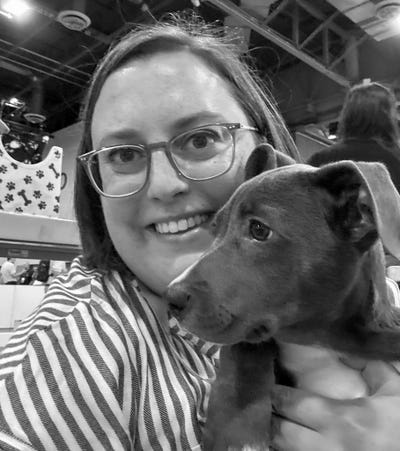NTT CMO: Rebranding a telco requires cultural sensitivity
In this Women in Comms mentor spotlight, CMO Ruth Rowan shares the challenges and lessons learned as she led the charge in rebranding dozens of tech companies across multiple countries.

Rebranding one company is never an easy challenge, and NTT CMO Ruth Rowan was recently tasked with rebranding more than 30 companies within the Japanese telco.
In this Women in Comms mentor spotlight, Rowan shares the challenges and lessons learned as she led the charge in rebranding dozens of tech companies across multiple countries. In case that wasn't daunting enough, NTT also acquired three new companies midway through the rebranding process.
In part one of this series, Rowan explains how the marketing team navigated the rebranding process by addressing cultural differences, and by establishing communications processes between engineering, networking and IT teams, which are often siloed in the telecommunications industry. Stay tuned for part two where Rowan discusses how the operator kept customer experience front and center while NTT's internal culture shifted.
Figure 1:  Ruth Rowan is CMO for NTT Ltd.
Ruth Rowan is CMO for NTT Ltd.
Women in Comms: Tell us a little about yourself and your role at NTT.
Ruth Rowan: I'm currently the chief marketing officer globally for NTT Limited. I look after all of our marketing and communications responsibilities from the center and have the accountability for our reputation, both in terms of our company, who we are, how we work and then obviously what we do.
I think one of the challenges we have across the board is that companies like NTT do so much in the technology services world and actually have a very broad range of different types of people that we work with and for around the world in different companies, across industries and, increasingly, the people within those companies that we work with is changing.
It's building that relationship with those people around the world and building trust, which is increasingly important in the relationships that we have with our clients. And of course, just making sure that we are proactively maintaining our reputation around risk.
One of the challenges we have, as all technology companies have, is making sure that we can recruit, attract and retain the best possible talent in our industry. And when you've got something that is creating as much disruption, anxiety and uncertainty as the virus at the moment , how we look after our employees is really important and so is clear and transparent communication.
WiC: You led a rebranding effort of about 30 companies, which is quite a few. What were some of the challenges as part of that process?
RR: We've certainly been through a huge amount of change in the last year. In the course of integrating 28 businesses, the company bought three more, so it turned into 31. It's been a lot of work and I think a real privilege to help lead some of that work.
There have been so many challenges on so many different levels. For most of us who have been involved in this project, and continue to be involved, we've never really been through anything like this before. I think very few business leaders or marketers get a chance to lead and to work within this kind of integration. It really does feel like a privilege, albeit quite a challenging privilege, but we've learned a lot.
At a people level, you're bringing 31 different companies together with 31 different cultures. We did a cultural audit at the beginning and we saw that we had more similarities across the businesses than we had differences, and that also gives you great foundations to build on when you bring businesses together.
What each of those businesses expected of marketing was slightly different. The definition of the responsibilities and remit of marketing was quite different. We had to address that while figuring out what the new organization design needs to be and what the operating model units are.
A brand change across 31 companies, pretty much all at the same time, is quite challenging. But when you when you look at what needs to change, to change a brand, you realize it's not something as simple as it just being about the website or the building, all the social media handles, the look and feel of a PowerPoint presentation, the logo, or the look and feel of a brochure. There's a lot of detail underneath that around what we call things – the type of language we use or tone of voice.
Even something as simple as a business cards or being able to give somebody a new email address, for example, because an email address is informed by the HR system and you're migrating 31 different HR systems together. Also, on a business card you've got something as simple as a job title. When you're bringing 31 companies together, you have 31 slightly different job titles, frameworks or approaches to how we call each other. You have to get that sorted before you can actually give somebody a business card with a job title on it.
We have the accountability of the deliverable of the business card, but a lot of what needs to happen to be able to give somebody that card is actually not in our control. We really learned the power of teamwork and understanding the interdependency on your colleagues to perform other business functions. We really had to interlock on timing before we commit to getting something done by a certain time. Lessons all over the place.
One of the very simple lessons I've learned in the last year is just to communicate because you're dealing with cultures that span over 50 different countries.
Next page: Rethinking interdepartmental communication and culture
WiC: How did interdepartmental communication change as part of this rebranding process? In the telecom industry, we talk a lot about how IT and networking teams, for example, need to communicate better. Were there any changes there and how do you go about making some of those changes?
RR: There is probably an unfair assumption that some of our more technical colleagues, who are world class at what they do around networking protocols or some of our coding colleagues, aren't necessarily those who are more extroverted or more aligned in terms of human communication – fairly or unfairly. We have got a very broad range of skills, personality types and also cultures and natural language. The majority of our people don't necessarily have English as their first language. There's that need to communicate and personalize the communications when you're going through this degree of change.
It's important to be very clear on what this means for each of our employees, communicating very carefully through our leaders and then down through our managers, to make sure that people understood what this meant for them. That was critical, so whether it was the people that work in our security operations centers, people in our technical product management teams or our data center division, it was really important that this change was clearly articulated and also localized for them.
For different parts of the new business there's been a different degree of change; everybody's brand has changed. For some people, you are actually changing their role. We've had to make sure that we're making this as personal as possible for the individual while balancing that with the strategic direction of the company.
You get so caught up in articulating change, sometimes it's easy to forget to remember the why of the change. What matters is, now that we're all operating under the single brand, that whichever part of the business our customers touch, that they get a consistent experience. When you come back to that driver of the why it's much easier for us to make the right decisions, rather than getting bogged down into individual decisions.
That's what we always come back to when addressing some of our more technical teams and the key foundational layers within our technology stack – our networking team, our cloud teams, our data center teams – what they enable us to do and what they enable our clients to do through providing that core telco service is extraordinary, but sometimes you have to help them reconnect to the outcome, rather than the process of getting to the outcome.
— Kelsey Kusterer Ziser, Senior Editor, Light Reading
About the Author(s)
You May Also Like




_International_Software_Products.jpeg?width=300&auto=webp&quality=80&disable=upscale)







